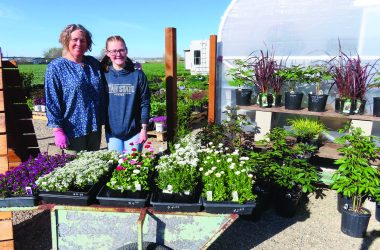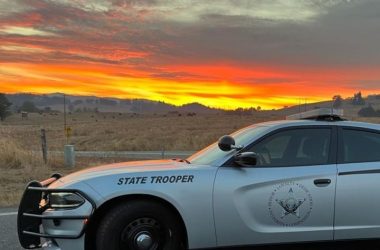
SALEM — A proposal to allow industrial development outside cities in 10 Eastern Oregon counties has passed a key legislative committee without encountering opposition from farm and conservation advocates.
Senate Bill 2 would allow each of the counties — Baker, Gilliam, Grant, Harney, Lake, Malheur, Sherman, Union, Wallowa and Wheeler — to designate up to 10 sites totaling 50 acres outside urban growth boundaries for “industrial uses or other employment uses.”
Each designation would based on an economic opportunity analysis and the development could not occur on high-value farmland or sage grouse habitat.
The Senate Committee on Environment and Natural Resources recommended the bill for approval 3-1 during a Feb. 12 work session.
“It’s totally local control. If the local people don’t want it, they don’t have to do it,” said Sen. Bill Hansell, R-Athena, during an earlier public hearing on the bill.
While SB 2 doesn’t solve all the land use problems facing Eastern Oregon, the proposal “recognizes the incredible difference between Eastern Oregon and the Willamette Valley,” where growth is more robust, said Sen. Cliff Bentz, R-Ontario.
The legislation aims to provide flexibility for “very rural” parts of Oregon without harming the state’s overall land use system, said Senate President Peter Courtney, D-Salem.
“I’ve heard about this and heard about this and heard about this. One size does not fit all,” Courtney said.
Sen. Arnie Roblan, D-Coos Bay, said it’s “remarkable” that groups with disparate interests could reach a consensus on the proposal, even if it doesn’t resolve every land use disagreement in Eastern Oregon.
“We’ve been looking for the solution to everything for 14 years and we’ve gotten nowhere at all,” he said.
While studying the issue, a workgroup that crafted the proposal found rural counties often didn’t have the planning staff or resources to guide large-scale development through the existing land use process, said Mary Kyle McCurdy, deputy director of the 1,000 Friends of Oregon conservation group.
These rural areas also came across development opportunities that weren’t an easy fit under current land use laws and were too different to encompass with one legislative proposal, McCurdy said.
Stakeholders reached an agreement on SB 2 “as kind of a pilot project” that “no one loves but perhaps we can all live with,” she said.
Members of the Oregon Farm Bureau disagreed with the reasons for a lack of economic opportunity in Eastern Oregon but appreciated that SB 2 was kept “limited in scope” and the organization is neutral on the bill, said Jonathan Sandau, a government affairs specialist with the group.
Once a county designates 50 acres for industrial development under the bill, it cannot enlarge the footprint without another legislative change or an “exception” to Oregon’s land use goals under existing law.
The proposal will allow counties to demonstrate the economic opportunities that are available under more flexible land use rules, said Dave Hunnicutt, president of the Oregon Property Owners Association.
“Under this bill, the max they’ll get is 50 acres, and we’ll see where it goes from there,” he said.




